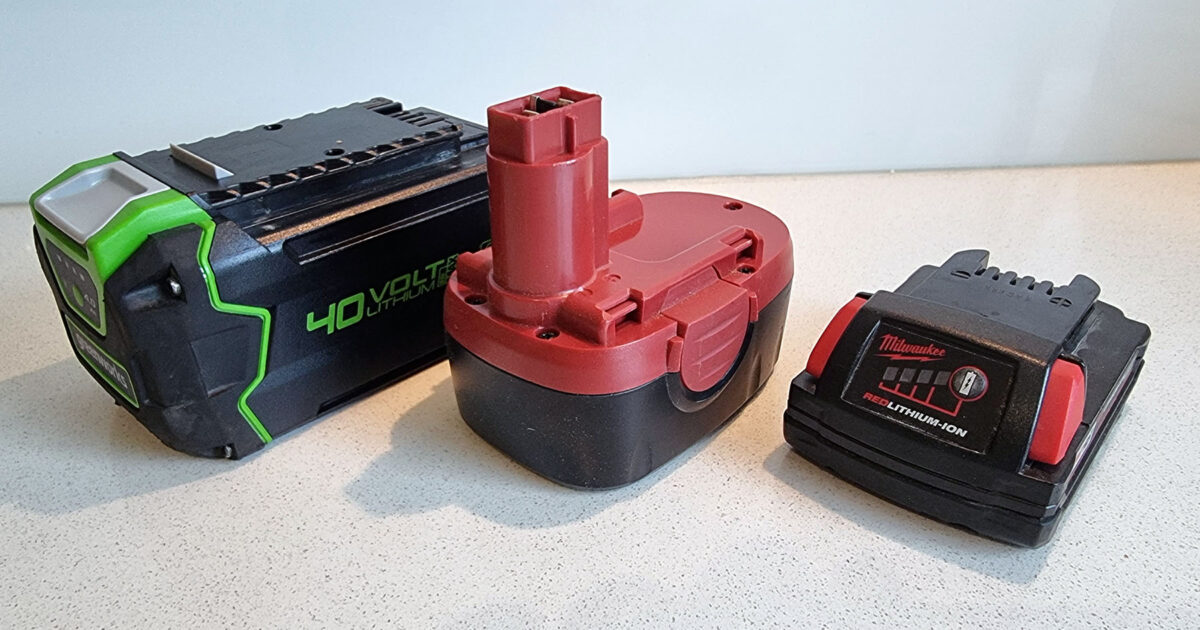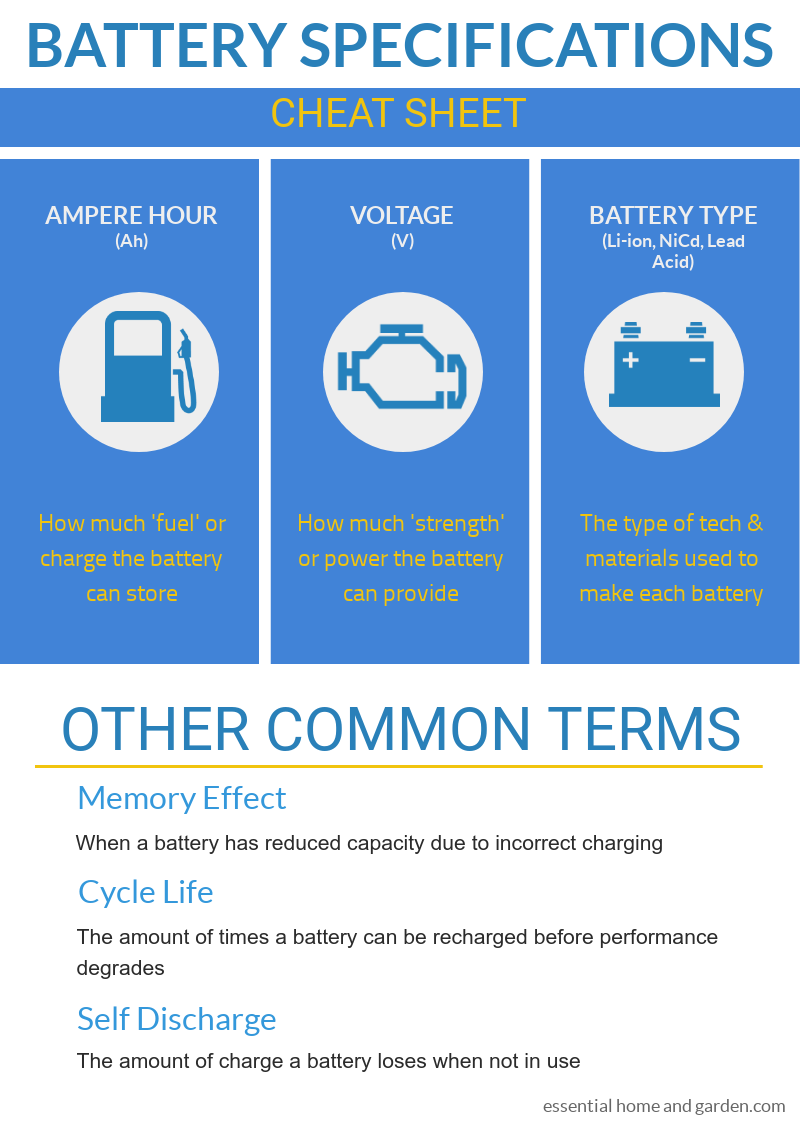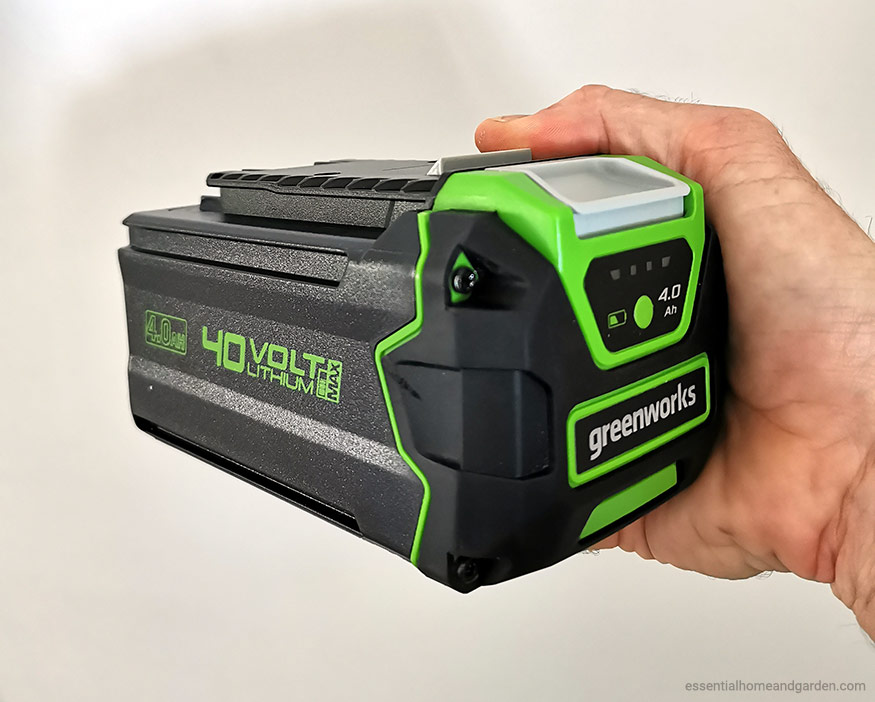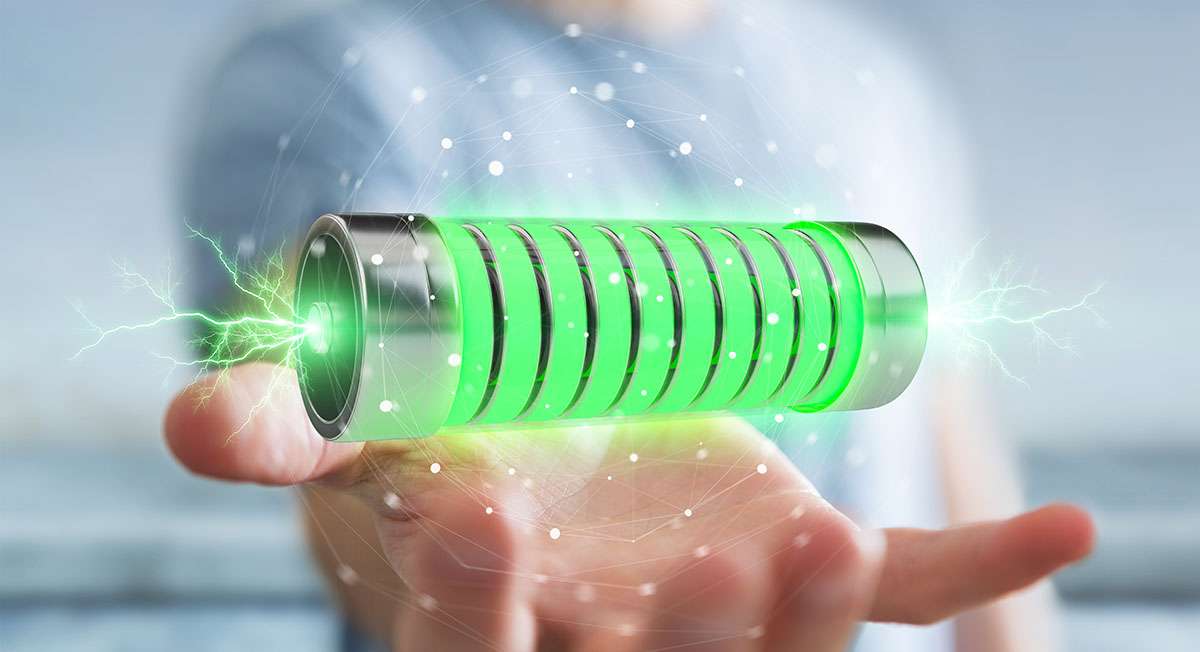The battery that powers your cordless power tool is one of its most important components. After all, without the source of power, your battery-powered tool is useless.
For this reason, knowing the basics of batteries can save you a lot of time and money.
In this cordless battery buying guide, I use my 15+ years of experience with power tools to put all the technical jargon into easily understandable English to make choosing the right battery and tool easy.
Understanding Cordless Battery Basics
When choosing a battery for your cordless tools, it’s important to understand the basics of battery technology.
Below is an overview some key terms and concepts that will help you make an informed decision when purchasing batteries for your cordless tools.
Voltage (V) – Power
Voltage is the measure of electrical potential in a battery. It determines the power output of your cordless tool.
In general, higher voltage correlates with increased power and torque, which can be beneficial for heavy-duty tasks like drilling into concrete or cutting through metal.
Common voltage options for cordless tools include 12V, 18V, 20V and 40v.
When buying batteries, always check that the voltage matches the requirements of your cordless tool. Using a battery with too low or too high voltage can damage your tools and void the warranty.
Ampere-Hours (Ah) – Run time
Ampere-Hours (Ah) is a unit used to measure battery capacity. Higher Ah ratings indicate that the battery can last longer before needing a recharge.
Ah, or ampere-hour is the total amount of charge your battery can deliver in one hour. E.g. Under ideal conditions, a cordless lawn mower that continuously draws 2.0 amperes (amps) of current will drain the total charge of a 2.0Ah battery in 1 hour.
Another example is that a 4Ah battery will last roughly twice as long as a 2Ah battery, assuming the same power draw from your cordless tool.
When choosing a battery, consider the amount of runtime needed for your tasks. If you regularly use your cordless tools for extended periods, it may be worth investing in a high-capacity battery for longer runtime.
Memory Effect
Memory effect, a phenomenon that causes some batteries, such as nickel-cadmium (NiCd) and nickel-metal hydride (NiMH), to lose their capacity over time if not fully discharged before recharging. To avoid this issue, occasionally perform a deep discharge to at least 80% depth of discharge (DOD), followed by a full charge to restore battery capacity.
However, lithium-ion (Li-ion) batteries don’t experience this problem. They can be recharged without fully discharging, allowing them to maintain their capacity. Be aware, though, that Li-ion batteries may experience a similar phenomenon called voltage depression – avoid this by occasionally performing a full discharge and charge cycle.
Battery Cycle Life
Cycle life is the number of times a battery can be fully charged and discharged before its capacity falls below 80% of its original capacity. It reflects the battery’s lifespan and depends on several factors, including type, quality, and usage.
Different types of batteries have different cycle lives. For instance, a lithium-ion battery may have a cycle life of 500 to 1000 cycles, while a lead-acid battery could range from 200 to 300 cycles.
To extend your battery’s cycle life, avoid extreme temperatures, high discharge rates, overcharging, and deep discharges.
Self-Discharge Rates
A battery’s self-discharge rate is how quickly it loses its charge when not in use. These rates vary depending on the type, age, temperature, and state of charge of the battery. For example, lithium-ion batteries have low self-discharge rates of about 2% to 3% per month, while nickel-cadmium batteries experience higher rates of 15% to 20% per month.
To reduce self-discharge rates, store batteries in a cool, dry place and keep them partially charged. This preserves battery charge and capacity by slowing down the chemical reactions causing self-discharge.
Deep-Discharge Impact
Deep-discharge impact refers to when a battery is discharged below a certain voltage or depth of discharge, potentially damaging the battery cells. This can reduce the capacity, performance, and lifespan of the battery.
While some batteries, such as lead-acid and nickel-cadmium, can tolerate deep discharges, others like lithium-ion and lithium-polymer are sensitive to them and can be permanently damaged.
Many modern batteries have a battery management system (BMS) or protection circuit, which can monitor battery voltage and current, disconnecting the battery before it’s overdischarged and damaged.
Types of Cordless Batteries
This section will discuss the main types of rechargeable batteries for cordless devices and their differences and advantages.
These include Nickel-Cadmium (NiCd) Batteries, Lithium-Ion (Li-Ion) Batteries, Nickel-Metal Hydride (NiMH) Batteries, and Lead Acid Batteries.
| Battery Type | Nickel-Cadmium (NiCd) | Lithium-Ion (Li-Ion) | Nickel-Metal Hydride (NiMH) | Lead Acid |
|---|---|---|---|---|
| Weight | Heavier | Lightest | Moderate | Heavy |
| Charge Capacity (Ah) | Lower (1.2-2.0 Ah) | Higher (2.0-6.0 Ah+) | Moderate (2.0-3.0 Ah) | Varies |
| Lifespan (Charge Cycles) | Moderate (~1000 cycles) | Higher (500-1500 cycles) | Moderate (~500-1000 cycles) | Lower (300-500 cycles) |
| Environmental Impact | High (contains cadmium) | Moderate (careful disposal needed) | Lower (less toxic materials) | High (contains lead and acid) |
| Self-Discharge Rate per Month | Higher (15-20%) | Lowest (1-5%) | High (20-30%) | Moderate (varies) |
| Memory Effect | Yes | No | Minimal | Not applicable |
| Cost | Lower | Higher | Moderate | Varies |
Nickel-Cadmium (NiCd) Batteries
Nickel-Cadmium, or NiCd, batteries were once the go-to choice for cordless tools due to their durability and low cost. They can handle high discharge rates and are relatively resistant to overcharging.
However, NiCd batteries suffer from what’s called the “memory effect,” which can reduce their overall capacity over time. This means that if you don’t discharge them completely before recharging, they might lose some of their capacity and no longer hold a full charge.
Common applications for NiCd batteries include power tools and radio-controlled toys.
Pros:
- Very cost effective
- Robust and not easily damaged
- Long life cycle – around 1,000 charges
- High current flow
Cons
- Heavy compared to Li-Ion and NiMH
- Low capacity (Ah)
- Must be cool before being recharged
- Regular deep discharge required
- Very toxic and not environmentally friendly (contains cadmium)
- Susceptible to memory effect
Lithium-Ion (Li-Ion) Batteries
Lithium-Ion (Li-Ion) batteries are now the most popular choice for cordless devices like smartphones, laptops, and power tools. These batteries offer several advantages over their counterparts, such as increased energy density, lighter weight, and longer runtime.
Li-Ion batteries do not suffer from the memory effect, meaning you don’t have to worry about fully discharging before recharging. Additionally, these batteries have a slow self-discharge rate, so they can remain charged for longer periods when not in use.
However, Li-Ion batteries tend to have a higher initial cost and may need replacement after a few years due to their limited lifespan.
Pros
- Very light-weight and small
- Hold a large amount of energy
- Self-discharge rate is very low at normal room temperatures
- No memory effect
- Very high capacity
- Requires no maintenance
Cons
- High temperatures during use or charging can cause the batteries to explode, although most feature adequate safety features to prevent this
- High cost compared to other battery types
- Is sensitive to heat and impact
Nickel-Metal Hydride (NiMH) Batteries
Nickel-Metal Hydride (NiMH) batteries are another option, featuring a higher energy density than NiCd batteries. NiMH batteries are more environmentally friendly and have less of a memory effect than NiCd batteries.
However, they do suffer from a higher self-discharge rate, meaning they lose charge faster when not in use.
These batteries are often used in cordless phones, digital cameras, and other small electronics.
Pros
- Capacity is higher than NiCd batteries
- Costs less than Li-ion batteries
- Cycle life can be greatly increased by storing and charging the batteries correctly
- Safe for the environment
- Can deliver large amounts of current to high powered devices (cameras, torches etc)
Cons
- Sensitive to temperature and should only be stored and used when between 33 degrees F – 103 degrees F
- Requires a deep discharge semi-regularly (every 2-3 months), but allowing NiMH batteries to continuously deep discharge will reduce the lifespan and reduce storage capacity
- Lack of use over long periods of time can be detrimental to the batteries lifespan and capacity
- When in use you should not let a NiMH battery fall below 70% capacity except when doing your maintenance deep discharge
- Cost more than Ni-Cd batteries
- Is susceptible to memory effect but can be reduced with proper charging. Memory effect is also reversible to a degree by carrying out a few proper charge/discharge cycles
Lead Acid Batteries
Lead Acid batteries are the oldest type of rechargeable battery and are commonly found in cars, motorcycles, and backup power systems. They are heavy, have a lower energy density compared to the other types mentioned above, and are sensitive to overcharging. However, they are relatively inexpensive and can provide a high discharge current.
Due to their weight and size, they are rarely used in cordless devices but can be found in some heavy-duty cordless tools and lawn equipment.
Pros
- Capacity is higher than NiCd batteries
- Costs less than Li-ion batteries
- Cycle life can be greatly increased by storing and charging the batteries correctly
- Safe for the environment
- Can deliver large amounts of current to high powered devices (cameras, torches etc)
Cons
- Sensitive to temperature and should only be stored and used when between 33 degrees F – 103 degrees F
- Requires a deep discharge semi-regularly (every 2-3 months), but allowing NiMH batteries to continuously deep discharge will reduce the lifespan and reduce storage capacity
- Lack of use over long periods of time can be detrimental to the batteries lifespan and capacity
- When in use you should not let a NiMH battery fall below 70% capacity except when doing your maintenance deep discharge
- Cost more than Ni-Cd batteries
- Is susceptible to memory effect but can be reduced with proper charging. Memory effect is also reversible to a degree by carrying out a few proper charge/discharge cycles
Battery Charging Technology
When it comes to maximizing the performance and longevity of your cordless tool batteries, the role of battery charging technology cannot be overstated. It’s not just about plugging in your battery; it’s about how you charge it that counts.
Smart Charging: The Game-Changer
Enter the world of smart charging technology – a true game-changer in battery care. Smart battery chargers do more than just pump electricity into your battery.
They communicate with it, adapt to its needs, and ensure it’s charged optimally.
This technology can detect the battery’s current state and adjust the charging rate accordingly, preventing overcharging and extending the battery’s life.
Optimizing Battery Life
Smart chargers also come with thermal protection, which safeguards the battery from the dangers of overheating during the charging process.
This is crucial, as excessive heat can degrade the battery’s performance and lifespan.
Charge Balancing: Ensuring Uniformity
Another significant aspect of advanced charging technology is charge balancing. This is particularly important for batteries with multiple cells, like Li-Ion and NiMH batteries.
Charge balancing ensures that all cells in a battery pack charge at the same rate and to the same level, maintaining the health and efficiency of the battery.
Fast Charging: A Double-Edged Sword
While the allure of fast charging is undeniable – who doesn’t want their batteries charged in the blink of an eye? – it’s important to understand its impact.
Fast charging can lead to increased heat generation, which might affect the battery’s long-term health.
Smart charging systems often balance the need for speed with the necessity of keeping the battery healthy, providing a happy medium.
Practical Tips for Cordless Battery Use and Maintenance
Extending the Life of Lithium-Ion Batteries
Lithium-ion batteries are commonly used in cordless devices due to their high energy density and low self-discharge rate.
To extend your Li-Ion batteries lifespan, follow these tips:
- Avoid extreme temperatures when using or storing the batteries. This is known as termal management. Keep them in a temperature range of 50°F and 95°F for optimal performance.
- Prevent the batteries from staying at 100% or 0% charge for extended periods, as it stresses them and reduces their lifespan. Aim for an 80% state of charge, or unplug the device as soon as it reaches 100%.
- Occasionally perform a full discharge and charge cycle (about once every 30 charges) to recalibrate the battery and maintain its voltage and capacity.
Importance of Compatible Chargers
Using a compatible charger that matches the voltage and current specifications of your cordless device and battery is essential.
An incompatible charger can damage or malfunction the battery or the device. Ideally, the charger should have the same voltage, polarity, and a current rating equal to or higher than the device.
Storage and Usage Frequency
If you’re not using your batteries frequently, store them in a cool and dry place with a 40% to 50% state of charge. This slows down the chemical reactions causing self-discharge and preserves the battery charge and capacity.
Keep them away from heat, moisture, and direct sunlight, which can degrade their performance.
Also, check and recharge them every few months to prevent dropping below the critical voltage level, rendering them unusable.
Remember, whether it’s a Dewalt, Makita, Ridgid, Bosch, Milwaukee, or Porter-Cable cordless tool, proper battery usage and maintenance are crucial for long-lasting performance.
The Future of Cordless Tool Batteries
Emerging Trends in Battery Technology
Battery technology has come a long way, especially with the introduction of lithium-ion batteries. These batteries offer many advantages over older types such as higher energy density, longer run time, faster charging, and lower weight.
However, there are still some challenges and limitations, like:
- high cost
- limited lifespan
- environmental impact
- safety issues.
Several emerging trends and innovations are on the horizon to address these challenges and improve the performance and efficiency of cordless tool batteries.
Solid State Batteries
Solid-state batteries use solid electrolytes instead of liquid or gel electrolytes, which can improve the energy density, safety, and durability of the batteries.
This is a significant advancement because it could potentially increase the life and performance of your cordless tools.
Graphene Batteries
Graphene batteries incorporate graphene, a single layer of carbon atoms, as a material for the electrodes or the electrolyte. This can increase the conductivity, capacity, and charging speed of the batteries, optimizing your cordless tool’s performance and reducing the time spent waiting for a recharge.
Wireless Charging
Wireless charging technology allows batteries to be charged without physical contact, using electromagnetic induction or resonance. This can reduce the hassle and wear of plugging and unplugging your batteries, making the charging process more convenient and efficient.
Frequently Asked Questions
How do I choose the right battery capacity for my cordless tool?
To choose the right battery capacity for your cordless tool, consider the power and run time needed for your projects. Battery capacity is measured in amp-hours (Ah), and a higher capacity means longer run times. Consider your project’s size and intensity when selecting a battery with the appropriate capacity.
What factors should I consider when comparing cordless battery brands?
When comparing cordless battery brands, consider factors such as performance, reliability, and price. Look for batteries with good reviews and those that are compatible with your cordless tool. You can also check for warranties or customer support services offered by the brand.
Are higher capacity batteries always better for cordless tools?
Higher capacity batteries offer longer run times, but they may also be heavier, which can cause fatigue during prolonged use. Depending on your project requirements, a heavier battery may not always be ideal. Consider the balance between run time and weight when choosing the right battery for your cordless tool.
How do I determine if a battery is compatible with my cordless tool?
To determine if a battery is compatible with your cordless tool, check the voltage and connection type. Make sure the battery and the tool are from the same brand or designed to work together. You can also refer to your tool’s user manual or the battery’s product description to ensure compatibility.
What is the difference between different battery voltages?
Battery voltage affects the power delivered to your cordless tool. Higher voltage batteries provide more power, allowing the tool to complete tasks more quickly and efficiently. However, this increased power may come at the cost of increased weight, which can be a factor to consider when selecting the right battery for your tool.
How can I prolong the life of my cordless tool battery?
To prolong the life of your cordless tool battery, follow these tips:
- Charge your battery frequently, even when not in use.
- Store the battery in a cool, dry place, away from direct sunlight and extreme temperatures.
- Use your battery frequently to avoid degradation due to inactivity.
- Avoid completely draining the battery; recharge it before it reaches a critically low level.




